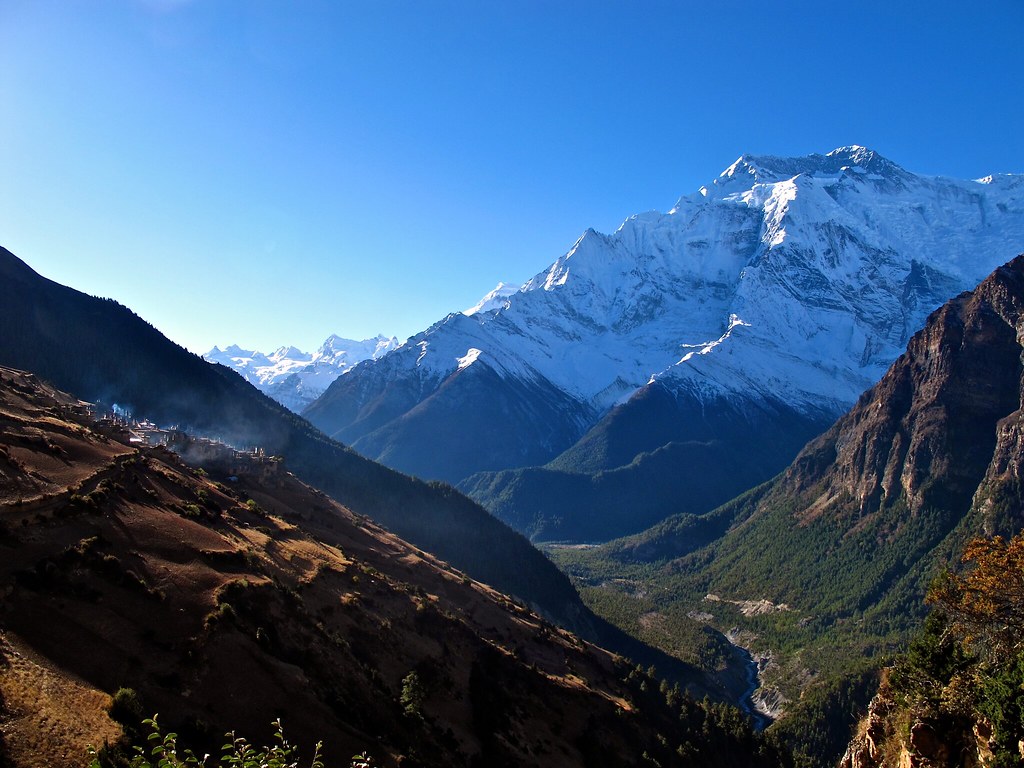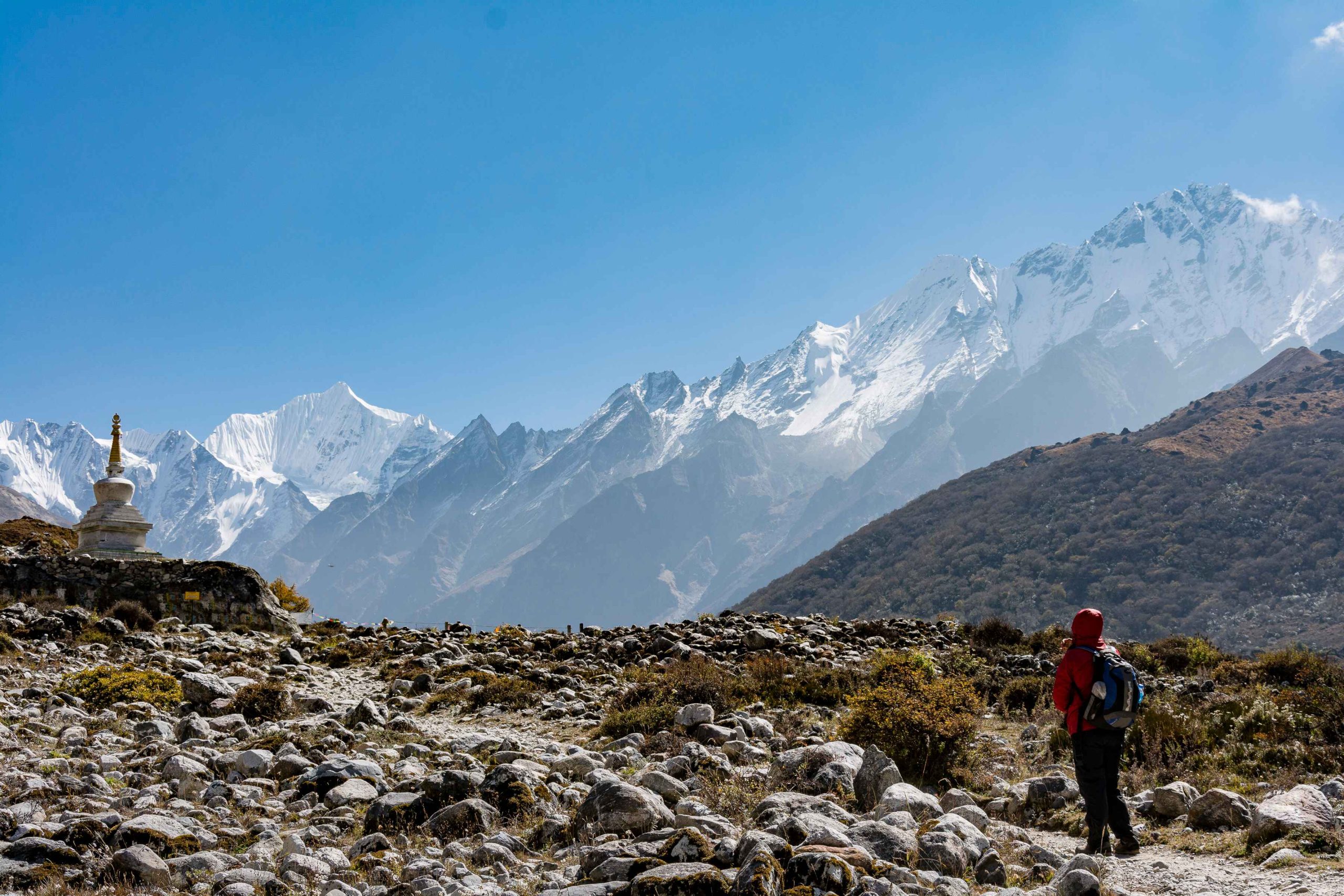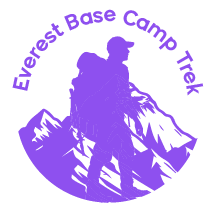What Are the Top 5 Winter Treks in Nepal for Adventure Lovers?
Nepal, known for its breathtaking mountain ranges and rich cultural heritage, transforms into a stunning winter wonderland when the colder months arrive. For adventure lovers, this is an exceptional time to explore the serene beauty of the Himalayas. With fewer trekkers on the trails, snow-covered landscapes, and crisp, fresh air, winter trekking in Nepal provides a unique and unforgettable experience. In this article, we’ll explore the top five winter treks in Nepal, offering in-depth insights on preparation, experiences, and tips for making the most of your journey.
1. Everest Base Camp Trek
The Everest Base Camp Trek is perhaps the most iconic trekking route in the world. Stretching approximately 130 kilometers round trip, this trek takes you through stunning scenery, charming Sherpa villages, and ancient Buddhist monasteries. In winter, the trek offers a unique perspective as the snow transforms the region into a picturesque landscape, making the journey even more special.
During winter, the trails to Everest Base Camp are significantly less crowded compared to peak seasons. You’ll have the opportunity to witness the breathtaking views of Mount Everest, the world’s highest peak, surrounded by a tranquil environment. The crisp, clear air often provides excellent visibility, allowing for spectacular views of the surrounding peaks.
The star of the trek, Mount Everest, stands at 8,848 meters and appears even more majestic with its snow-capped summit. The Khumbu Icefall is a magnificent sight, full of towering ice seracs, while Namche Bazaar, known as the gateway to Everest, offers great views and a taste of local culture.
A typical 12 to 14-day itinerary includes:
- Day 1: Fly from Kathmandu to Lukla, then trek to Phakding. Enjoy the beautiful landscape as you walk along the Dudh Koshi River.
- Day 2: Trek from Phakding to Namche Bazaar. This is a challenging day as you ascend steeply, but the views from Namche are worth it.
- Day 3: Acclimatization day in Namche Bazaar. Hike to the Everest View Hotel for panoramic views and visit local shops and cafes.
- Days 4-8: Continue to Tengboche, Dingboche, and finally to Gorak Shep before reaching Everest Base Camp. Each day brings you closer to breathtaking views and new experiences.
- Days 9-11: Retrace your steps back to Lukla, taking the time to appreciate the journey you’ve made.
- Day 12: Fly back to Kathmandu, where you can celebrate your achievement.

Proper gear is crucial for winter trekking. Invest in high-quality thermal layers, a down jacket, waterproof trekking boots, and gaiters to keep snow out. Staying hydrated is vital; drink plenty of water, and consider carrying a thermos to keep your drinks warm. Additionally, take your time to acclimatize to the altitude to avoid sickness. Listen to your body and rest when needed.
The trek takes you through several Sherpa villages, where you can experience their rich culture. Don’t miss visiting the Tengboche Monastery, a significant site for Buddhism, where you can witness monks chanting and gain insight into their spiritual practices.
2. Annapurna Circuit Trek
The Annapurna Circuit is one of the most diverse trekking routes in Nepal, offering a unique blend of stunning landscapes, cultural richness, and varying climatic zones. The entire circuit is around 160 kilometers, taking trekkers through lush subtropical forests, alpine meadows, and high mountain deserts.
In winter, the Annapurna Circuit becomes a quiet paradise. The snow-capped peaks of Annapurna and Dhaulagiri shine brightly against the clear blue sky. The trails, flanked by pristine snow, create a breathtaking backdrop perfect for photography and reflection.
Key highlights of the trek include Thorong La Pass, at 5,416 meters, which offers spectacular views of the Annapurna range, Manang Village, known for its rich culture and unique lifestyle, and Muktinath Temple, a sacred site for both Hindus and Buddhists.
A typical 14 to 16-day itinerary includes:
- Day 1: Drive from Kathmandu to Besishahar, the starting point of the trek.
- Days 2-5: Trek through villages like Jagat, Dharapani, and Chame, gradually gaining altitude.
- Days 6-9: Cross the Thorong La Pass and descend to Muktinath.
- Days 10-12: Continue through Jomsom, then either fly or drive back to Pokhara.
- Days 13-14: Spend a couple of days exploring Pokhara before returning to Kathmandu.
The trek takes you through diverse cultures, including Gurung, Thakali, and Tibetan communities. You’ll have the chance to visit ancient monasteries, interact with locals, and enjoy delicious traditional meals. Be sure to try local dishes like dal bhat (lentil soup with rice) and momo (dumplings).

Ensure you are in good physical condition, as the trek can be demanding. Start training a few months prior to your trip, focusing on cardiovascular fitness and endurance. Experiment with local foods to keep your energy levels high, as eating fresh vegetables, fruits, and protein-rich meals will help you stay healthy on the trail.
3. Langtang Valley Trek
The Langtang Valley Trek is a hidden gem that offers stunning landscapes, rich biodiversity, and a glimpse into the lives of the Tamang people. This trek is often less crowded than the Everest and Annapurna regions, making it a peaceful retreat.
In winter, the Langtang Valley becomes a tranquil haven. With fewer trekkers on the trails, you can enjoy a deep connection with nature and the majestic Himalayas. The snow-covered landscapes create a magical atmosphere, and the serenity of the valley is truly captivating.
Key highlights of the trek include Langtang Lirung, a peak standing at 7,227 meters that dominates the skyline, and Kyanjin Gompa, a traditional Tibetan monastery located at the base of the glacier. It’s a great place for acclimatization and enjoying the views. Additionally, Ganja La Pass offers a challenging but rewarding part of the trek, with panoramic views of the surrounding peaks.
A typical 7 to 10-day itinerary includes:
- Day 1: Drive from Kathmandu to Syabrubesi, the starting point of the trek.
- Days 2-4: Trek through Lama Hotel, Langtang Village, and Kyanjin Gompa, acclimatizing along the way.
- Days 5-6: Explore the glaciers and surrounding peaks, then retrace your steps back to Syabrubesi.
- Day 7: Drive back to Kathmandu.
The Langtang region is home to a variety of wildlife, including red pandas, Himalayan tahr, and various bird species. Winter offers a unique chance to see these animals in their natural habitat, often foraging for food amidst the snow.
Be prepared for cold temperatures, especially at higher altitudes. Check weather forecasts before heading out and pack accordingly. Hiring a local guide can enhance your experience; they can provide insights into the flora, fauna, and culture of the region, making your trek even more enriching.

4. Gosaikunda Trek
The Gosaikunda Trek is famous for its beautiful lakes and spiritual significance. Located at an altitude of 4,380 meters, Gosaikunda is considered sacred by both Hindus and Buddhists, making it a popular destination for pilgrimage.
In winter, Gosaikunda’s lakes often freeze, creating a serene and mystical environment. The surrounding snow-capped mountains reflect in the still waters, providing stunning photo opportunities. The trek itself is moderately challenging, offering a perfect blend of natural beauty and cultural richness.
Key attractions include the Gosaikunda Lakes, with the main lake surrounded by 108 others, each with its own unique beauty and significance. The trek takes you through Langtang National Park, known for its rich biodiversity and stunning landscapes. Additionally, the lakes are a pilgrimage site, especially during the full moon in August when thousands of devotees come to pay their respects.
A typical 7 to 9-day itinerary includes:
- Day 1: Drive from Kathmandu to Dhunche, the starting point of the trek.
- Days 2-3: Trek through lush forests to Gosaikunda, visiting the lakes and taking in the beauty.
- Days 4-5: Explore the area and return to Dhunche, enjoying the stunning views along the way.
- Day 6: Drive back to Kathmandu.
The stunning views of the frozen lakes and the backdrop of the Himalayas make Gosaikunda a photographer’s dream. Be sure to capture the beauty of sunrises and sunsets over the lakes, as the colors reflect dramatically in the water.
While the trek is shorter than others, it still involves significant altitude gain. Be prepared for steep ascents and ensure you are physically fit. Carry lightweight gear, but also include essentials like a first-aid kit, water purification tablets, and snacks for energy.

5. Makalu Base Camp Trek
The Makalu Base Camp Trek is one of the most remote and least visited treks in Nepal, making it a true adventure for those seeking solitude. At an altitude of 5,000 meters, this trek offers spectacular views of Makalu, the fifth-highest mountain in the world.
In winter, this trek is perfect for those looking to escape the crowds and enjoy the pristine beauty of nature. The untouched landscapes, combined with the challenge of winter trekking, create an unforgettable experience. The remote nature of the trek allows for an intimate connection with the mountains.
Key highlights include Makalu Peak, standing at 8,485 meters, which is a sight to behold, and Barun Valley, filled with diverse flora and fauna. Discover beautiful high-altitude lakes that reflect the majestic peaks around them.

A typical 15 to 17-day itinerary includes:
- Day 1: Fly from Kathmandu to Tumlingtar.
- Days 2-6: Trek through small villages like Chichila and Num to Makalu Base Camp.
- Days 7-11: Explore the area around Makalu Base Camp, taking day hikes to nearby viewpoints.
- Days 12-14: Retrace your steps back to Tumlingtar.
- Day 15: Fly back to Kathmandu.
The trek offers breathtaking views of Makalu and the surrounding peaks. The dramatic landscapes, combined with the quiet of winter, create an atmosphere of tranquility and awe. Winter brings a certain magic to the mountains, with snow blanketing the trails and enhancing the beauty of the surroundings.
Given its remote location, prioritizing safety is essential. Always trek with a guide and carry a satellite phone for emergencies. Engage with the local communities, who often lead simple yet rich lives. Learning about their traditions and customs can enrich your trekking experience.
Additional Tips for Winter Trekking in Nepal
Winter trekking requires specific gear to ensure comfort and safety. Layering is key; start with a moisture-wicking base layer, add an insulating layer (like fleece), and finish with a waterproof and windproof outer layer. Invest in high-quality, insulated trekking boots that provide good ankle support and are waterproof. Don’t forget warm gloves, a hat, and a neck gaiter to protect against cold winds. Sunglasses with UV protection are also important for glare from the snow.
Be aware of symptoms of altitude sickness, such as headaches, dizziness, and nausea. Ascend gradually and stay hydrated to minimize risks. If you start feeling unwell, don’t hesitate to descend to a lower altitude. Fuel your body with high-energy foods; carry nuts, energy bars, and dried fruits for quick snacks on the go.
Most treks in Nepal require permits. Here’s a quick rundown:
- Everest Region: TIMS (Trekkers’ Information Management System) card and Sagarmatha National Park Permit.
- Annapurna Circuit: TIMS card and Annapurna Conservation Area Permit.
- Langtang Valley: TIMS card and Langtang National Park Permit.
- Gosaikunda: Langtang National Park Permit.
- Makalu Region: Makalu National Park Permit and TIMS card.
Hiring a local guide is highly recommended for several reasons. Guides are familiar with the terrain and can navigate safely through changing weather conditions. They provide valuable information about local customs, history, and traditions, making your trek even more enriching. Many guides speak English and can help bridge communication gaps with local people.
While trekking, it’s important to respect local customs and traditions. Always ask before taking photos of people, and be mindful of their cultural practices. Dress modestly and follow local etiquette, especially when visiting religious sites.
Winter trekking in Nepal offers an incredible opportunity to explore stunning landscapes, rich cultures, and the serene beauty of the Himalayas. Whether you choose the iconic Everest Base Camp Trek, the diverse Annapurna Circuit, the tranquil Langtang Valley, the sacred Gosaikunda, or the remote Makalu Base Camp, each trek provides a unique adventure that will stay with you for a lifetime.
As you plan your winter trek, remember to prepare well, respect the local cultures, and prioritize your safety. The memories you create in the majestic mountains of Nepal will be cherished forever. Embrace the adventure and immerse yourself in the beauty of the Himalayas. Happy trekking!
Ready to embark on an unforgettable adventure? Visit EBC Trek Dot Net today to plan your perfect winter trek in Nepal! Your journey awaits!
